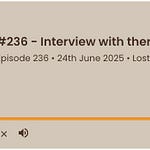“Being slightly paranoid is like being slightly pregnant–it tends to get worse.”
— Molly Ivins
Balance
Balance is the first thing we lose when our mental health begins to fail. Balance is a combination of appropriate awareness and response. Appropriate refers to things that are effective in bringing one back into balance. This definition is recursive because balance is recursive. It changes as situations change. Call it resilience: an ability to return to an effective, functioning state.
Fear is an aspect of awareness. It is a pervasive warning that diverts our attention from small matters of maintenance, such as eating and sleeping. In response, we take unusual actions, such as moving, engaging, or hiding. Fears make us anxious, and anxiety compels us to act. Fear is so powerful and self-justifying that, somewhat ironically, it can lead us into danger.
Persistent fear indicates we are unbalanced. It’s difficult to know if this is a failure of the environment or a failure of your mind. If the problem is the environment, then the solution will lie in taking action. If the problem is with your mind, then the solution is to get help.
Taking action to correct a toxic environment can save your life. It may even save your family or your community. But taking action in response to a disordered mind will jeopardize your safety and that of those around you. The essential question is whether your fears are justified.
Justified fears are usually testable. Even remote danger and subtle concerns are testable. Until you can test your fears, you cannot understand them.
Testing a fear may make dangers clear and the fears worse, but this should also make different actions clear. Fears that grow upon examination without evidence are likely unjustified. Such fears lean toward paranoia and mental disorder. Consider some examples.
Conspiracy Theories
Paranoia has existed in medical literature for over two thousand years. Originally seen as generalized madness, it was defined as delusional thinking in the 19th century (Lewis and Ridenour 2017).
The feeling that you’re being manipulated by unwanted, unseen forces can either be insightful or paranoid. The difference lies in what results from further analysis and attention. If you cannot test, justify, or bring to light additional supporting information, and your fears cannot be justified, then your concern is baseless. If all you have is a suspicion, then what appears as a conspiracy is likely your creation. It may be an inspiration or a mental disorder.
But if further examination reveals corroborating evidence, history, and structure, then your fears reflect your ignorance of the system in which you’re involved. You may continue to harbor fears, or you might be resolved to take informed action.
Most of what we call “conspiracy theories” are hidden organizational principles. They are not so much conspiracies against you, as they are mechanisms for selective advantage in which you are not included. You might benefit from them or feel victimized by them. We’re never fully aware of the workings of the systems we’re involved in.
In a global, capitalist economy, almost every economic, political, corporate, and social structure delivers advantages to selected groups. From this point of view, your fears are simply your ignorance of protocol, or your disadvantaged position. You may not like it and it may endanger you, but it’s not personal and may not affect you. The more clearly you understand these systems, the more effectively you can find a position that works to your advantage.
Unidentifiable Threats
Unidentifiable threats differ from conspiracies in lacking clear actors, mechanisms, and beneficiaries. Conspiracy theories spawn from poorly identified threats. If the negative feelings lead to greater fears, anxieties, and antisocial behaviors, then they likely reflect your mental state rather than a dangerous environment. Consider these examples.
If you’re burdened with concerns and want to get to the root of it,
then schedule a free, zoom call at:
Listen to this episode with a 7-day free trial
Subscribe to Stream of Subconsciousness to listen to this post and get 7 days of free access to the full post archives.














